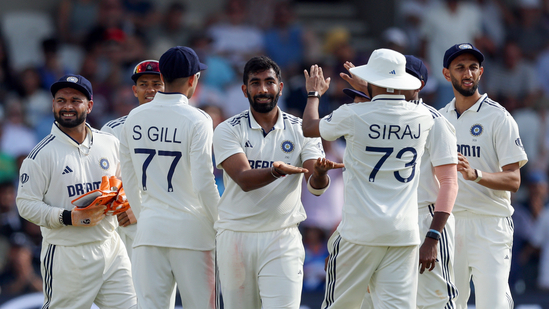Former India head coach and legendary cricketer Ravi Shastri recently gave an insightful interview to sports anchor Sanjana Ganesan, where he shared his thoughts on the third Test match. During the conversation, Shastri spoke at length about team combinations, pitch conditions, key player selections, and tactical adjustments that played a crucial role in shaping the game’s outcome. His words reflected deep cricketing wisdom and strategic clarity, offering fans and analysts a clearer understanding of the decisions made by the team management.
One of the key topics Ravi Shastri discussed in interview the return of Ravindra Jadeja to the playing XI. After missing the previous match, Jadeja was reintroduced in the third Test, and Shastri backed this move wholeheartedly. According to him, Jadeja is a “three-dimensional cricketer” who adds tremendous balance to any side. He said:
Shastri emphasized that in a tightly contested series, players like Jadeja, who contribute in all departments, can be decisive. He highlighted that Jadeja’s inclusion was not just about experience but also about offering a left-arm spin option and lower-order batting depth, which was lacking in the previous matches.
Another major decision Shastri addressed was the exclusion of veteran spinner R. Ashwin. While this move raised eyebrows among fans and pundits, Shastri defended the choice, saying it was based on pitch conditions and the need for variation in bowling. He explained that the team needed a seam-bowling all-rounder or an extra pacer on a surface that offered more bounce and lateral movement.
“You have to look at the surface. If there’s more for the seamers and the match is expected to go deep, a fast bowler might provide better control.”

Shastri’s view highlighted in interview the importance of flexibility and horses-for-courses selection policies in modern-day Test cricket. Instead of sticking with reputation, the focus was on the playing conditions and match situations.
He also spoke about the unpredictable weather that affected the third Test. Rain interruptions made the match tricky for both sides, especially the batting units. Shastri pointed out that adapting to changing conditions—sudden moisture on the pitch, variable bounce, and swing under overcast skies—was the key to success.
“When conditions change so frequently, the game becomes about adaptability. The team that adjusts faster will always have the upper hand.”
Shastri praised India’s improved fielding performance in the third Test, particularly in difficult conditions. He noted that sharp fielding, direct hits, and energy on the field made a big difference in maintaining pressure on the opposition. He attributed this to good fitness levels and mindset changes introduced in the team in recent years.
Beyond individual performances, Shastri was impressed with the overall tactical approach of the Indian team. He believed that the leadership group, including the captain and coaching staff, took brave calls that ultimately paid off. In his view, such calculated risks are necessary at the international level if a team wants to win series in challenging overseas conditions.
He also applauded the bowling unit’s discipline, especially the pacers who stuck to a tight line and length, exploiting even the smallest movement off the pitch. According to Shastri, these disciplined spells built pressure and created opportunities that the team successfully capitalized on.
In the latter part of the interview, Shastri stressed the need for long-term vision in team selection. He said that some decisions might seem controversial in the short term but are made with a broader strategy in mind. Whether it’s backing youngsters or making changes based on conditions, the objective is always to build a winning combination for the future.
“Winning a Test match is one thing. Winning a series requires depth, planning, and brave decisions. I’m glad we’re seeing that kind of mindset in the current team setup.”
To conclude, Ravi Shastri’s interview with Sanjana Ganesan provided valuable insights into the third Test match. His analysis of player selections, pitch readings, weather adjustments, and team strategies showcased his deep understanding of the game. He not only defended the team’s decisions but also explained the reasoning behind them in a way that was accessible to cricket fans of all levels.
As always, Shastri’s straightforward and analytical style made the discussion engaging and informative. His experience as a former coach and commentator gave the audience a rare behind-the-scenes look into the planning and execution of a high-stakes Test match. The interview ultimately underlined the message that success in cricket, especially in the longer format, is a product of bold thinking, sharp observation, and tactical adaptability.

